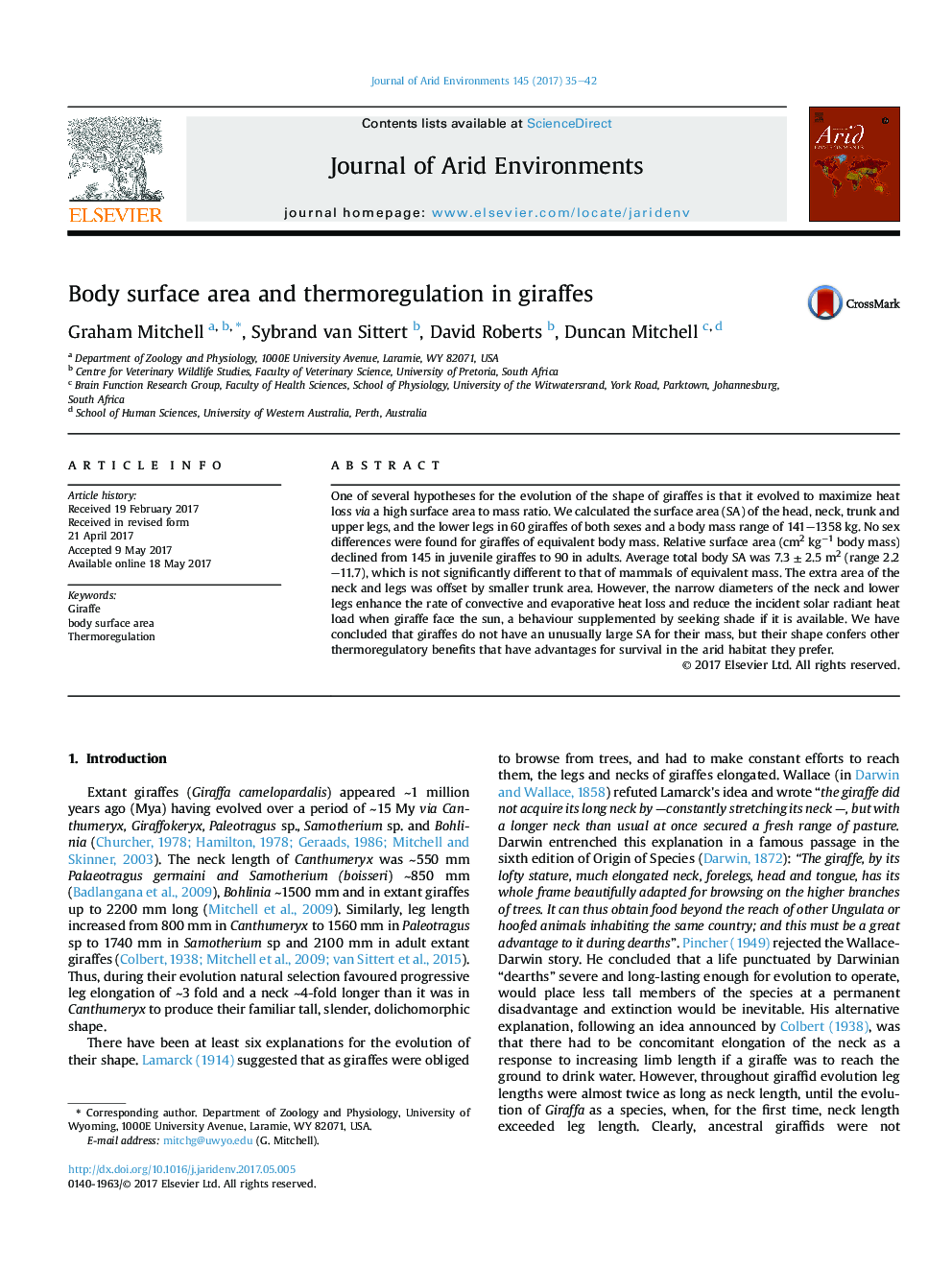| کد مقاله | کد نشریه | سال انتشار | مقاله انگلیسی | نسخه تمام متن |
|---|---|---|---|---|
| 5744389 | 1618214 | 2017 | 8 صفحه PDF | دانلود رایگان |
- The thermoregulatory advantages of the shape of giraffes are analyzed.
- They do not arise from a larger than expected surface area.
- They arise from enhanced convective and evaporative heat loss.
- Their shape reduces incident radiation.
- These have advantages in the hot arid environments that giraffes inhabit by preference.
One of several hypotheses for the evolution of the shape of giraffes is that it evolved to maximize heat loss via a high surface area to mass ratio. We calculated the surface area (SA) of the head, neck, trunk and upper legs, and the lower legs in 60 giraffes of both sexes and a body mass range of 141-1358 kg. No sex differences were found for giraffes of equivalent body mass. Relative surface area (cm2 kgâ1 body mass) declined from 145 in juvenile giraffes to 90 in adults. Average total body SA was 7.3 ± 2.5 m2 (range 2.2-11.7), which is not significantly different to that of mammals of equivalent mass. The extra area of the neck and legs was offset by smaller trunk area. However, the narrow diameters of the neck and lower legs enhance the rate of convective and evaporative heat loss and reduce the incident solar radiant heat load when giraffe face the sun, a behaviour supplemented by seeking shade if it is available. We have concluded that giraffes do not have an unusually large SA for their mass, but their shape confers other thermoregulatory benefits that have advantages for survival in the arid habitat they prefer.
Journal: Journal of Arid Environments - Volume 145, October 2017, Pages 35-42
